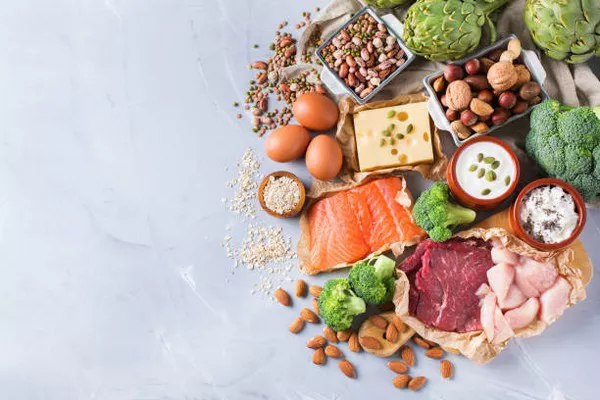Subcutaneous fat is the layer of fat stored just beneath the skin. It is different from visceral fat, which is stored around organs. While subcutaneous fat is less harmful than visceral fat, excess amounts can still affect health and appearance. Identifying the foods that contribute to subcutaneous fat and adopting effective fitness and weight loss strategies are key to managing and reducing this fat.
Foods That Cause Subcutaneous Fat
Sugary Foods
Sugary foods are a significant contributor to subcutaneous fat. These include candies, pastries, sodas, and other sweet treats. High sugar intake can lead to an increase in overall calorie consumption and can cause insulin resistance, which promotes fat storage.
Refined Carbohydrates
Refined carbohydrates, such as white bread, pasta, and baked goods, are quickly broken down into sugars in the body. This rapid digestion can lead to spikes in blood sugar and insulin levels, encouraging the storage of fat.
Fast Food
Fast food items like burgers, fries, and pizza are often high in unhealthy fats, sugars, and calories. They are typically low in nutrients and fiber, leading to excessive calorie intake and fat accumulation.
High-Fat Dairy Products
Full-fat dairy products, such as whole milk, cheese, and butter, can contribute to fat gain. They are high in saturated fats, which can increase the risk of fat storage and cardiovascular problems.
Processed Snacks
Processed snacks like chips, crackers, and snack bars are often high in unhealthy fats, sugars, and salt. These foods can contribute to overeating and fat gain due to their calorie density and low nutritional value.
High-Calorie Beverages
Beverages such as sugary drinks, energy drinks, and alcohol can add a significant number of empty calories to your diet. These calories can easily lead to weight gain and increased fat storage.
Effective Fitness and Weight Loss Strategies
Balanced Diet
Focus on Whole Foods
A balanced diet should prioritize whole, unprocessed foods. Include plenty of vegetables, fruits, lean proteins, and whole grains. These foods are nutrient-dense and help in maintaining a healthy weight.
Portion Control
Managing portion sizes is crucial in preventing overeating. Use smaller plates, measure serving sizes, and be mindful of your hunger and fullness cues.
Reduce Sugar and Refined Carbs
Minimize the intake of sugary foods and refined carbohydrates. Opt for complex carbohydrates like whole grains, legumes, and vegetables, which provide sustained energy and support weight management.
See Also: What Are Healthy Breakfast Foods For Weight Loss
Regular Exercise
Cardiovascular Exercise
Engage in regular cardiovascular exercises such as running, cycling, or swimming. Cardiovascular workouts help burn calories and reduce overall fat, including subcutaneous fat.
Strength Training
Incorporate strength training exercises into your routine. Building muscle mass helps increase your metabolic rate, which can aid in fat loss. Include exercises like squats, lunges, and weightlifting.
High-Intensity Interval Training (HIIT)
HIIT involves short bursts of intense exercise followed by rest periods. This type of training is effective for burning fat and improving cardiovascular health. Examples include sprint intervals and circuit training.
Healthy Lifestyle Choices
Stay Hydrated
Drinking plenty of water helps maintain metabolism and supports overall health. Aim for at least 8 cups of water per day, and more if you are physically active.
Get Adequate Sleep
Quality sleep is essential for weight management and overall health. Aim for 7-9 hours of sleep per night to support fat loss and recovery.
Manage Stress
Chronic stress can lead to hormonal imbalances that promote fat storage. Practice stress management techniques such as meditation, yoga, or deep breathing exercises.
Tracking Progress
Monitor Your Diet
Keep a food diary or use a nutrition app to track your food intake. This can help you identify patterns and make necessary adjustments to your diet.
Set Realistic Goals
Set achievable fitness and weight loss goals. Break them down into smaller, manageable steps to maintain motivation and track progress.
Seek Professional Guidance
Consider working with a fitness coach or nutritionist to develop a personalized plan. Professional guidance can help you stay on track and achieve your goals effectively.
Conclusion
Managing subcutaneous fat involves understanding the impact of certain foods on fat storage and implementing effective fitness and weight loss strategies. By focusing on a balanced diet, engaging in regular exercise, making healthy lifestyle choices, and tracking your progress, you can successfully reduce subcutaneous fat and improve overall health.
Adopting these practices can help you achieve a healthier body composition and enhance your well-being. Remember, consistency and patience are key to achieving and maintaining your fitness and weight loss goals.


